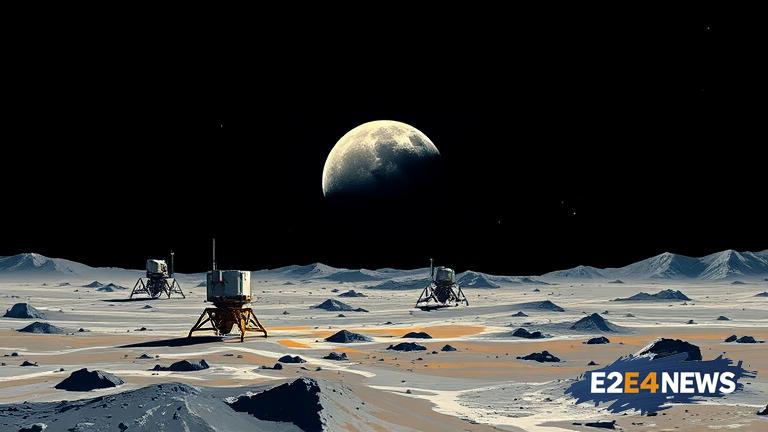India’s space agency, the Indian Space Research Organisation (ISRO), is preparing for its third lunar mission, Chandrayaan-3, which is scheduled to launch in the near future. The mission aims to land near the lunar south pole, a region that is of great interest to scientists due to its potential for water ice and other resources. The Chandrayaan-3 mission will build on the successes of the previous two missions, Chandrayaan-1 and Chandrayaan-2, which provided valuable insights into the lunar surface and subsurface. The new mission will feature a lander and a rover, which will work together to explore the lunar surface and conduct scientific experiments. The lander will be equipped with a suite of instruments, including a seismometer, a heat flow instrument, and a laser-induced breakdown spectrometer. The rover, on the other hand, will be equipped with instruments such as a alpha particle X-ray spectrometer, a laser-induced breakdown spectrometer, and a radar instrument. The mission will also include an orbiter, which will provide communication relay services to the lander and rover. The Chandrayaan-3 mission is expected to provide significant scientific returns, including insights into the lunar surface composition, geology, and atmosphere. The mission will also help to advance our understanding of the lunar water cycle and the potential for in-situ resource utilization. In addition to its scientific objectives, the Chandrayaan-3 mission will also demonstrate key technologies, such as lunar landing and ascent, and will help to establish India as a major player in the global space industry. The mission is being developed in collaboration with other Indian agencies, including the Department of Space and the Ministry of Science and Technology. The Chandrayaan-3 mission is expected to have significant implications for India’s space program, including the development of new technologies and the creation of new opportunities for scientific research and exploration. The mission will also help to inspire future generations of scientists and engineers in India and around the world. The lunar south pole is a region of great interest to scientists due to its unique environment and potential for water ice and other resources. The region is characterized by its permanently shadowed craters, which are thought to contain water ice and other frozen volatiles. The Chandrayaan-3 mission will provide the first opportunity for scientists to study this region in detail, using a combination of instruments and techniques. The mission will also help to advance our understanding of the lunar geology and the processes that have shaped the lunar surface over time. The Chandrayaan-3 mission is a significant milestone in India’s space program, and it is expected to have a major impact on our understanding of the Moon and the solar system. The mission will also help to establish India as a major player in the global space industry, and will provide new opportunities for scientific research and exploration. The Chandrayaan-3 mission is a testament to the ingenuity and determination of the Indian space community, and it is expected to inspire future generations of scientists and engineers in India and around the world. The mission is being developed with a focus on sustainability and environmental responsibility, and it is expected to have a minimal impact on the lunar environment. The Chandrayaan-3 mission is a major step forward for India’s space program, and it is expected to have significant implications for the future of space exploration and development. The mission will also help to advance our understanding of the Moon and the solar system, and will provide new opportunities for scientific research and discovery.
